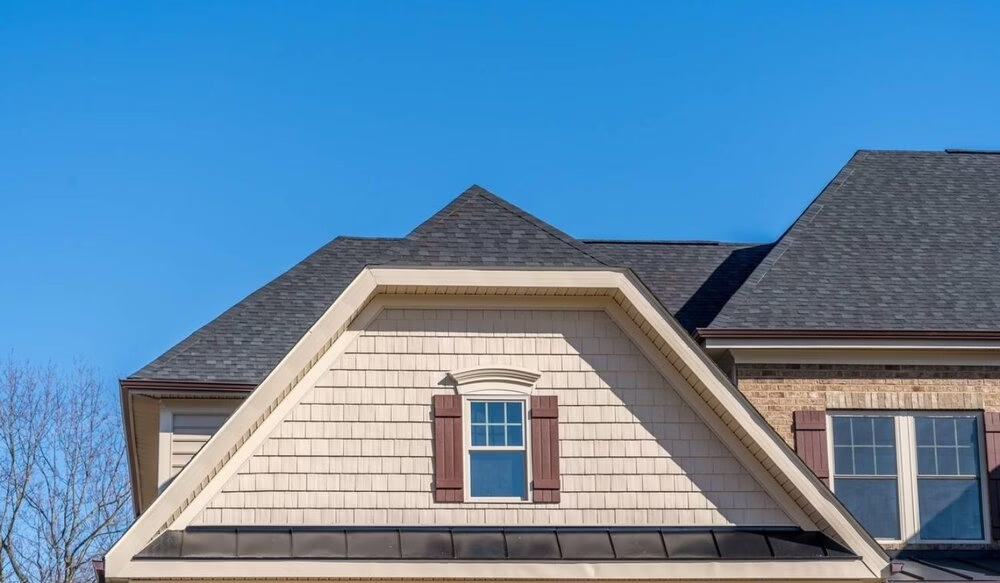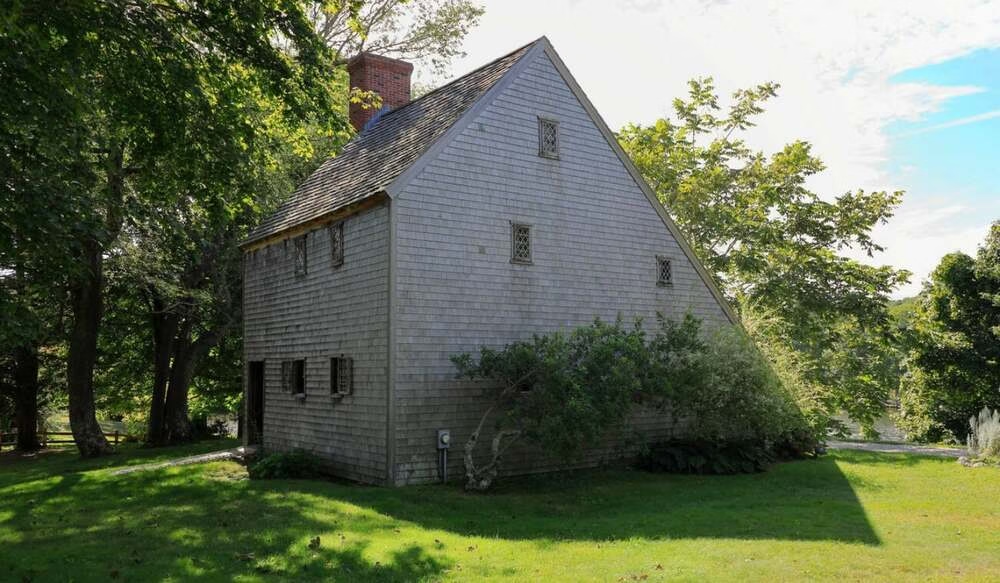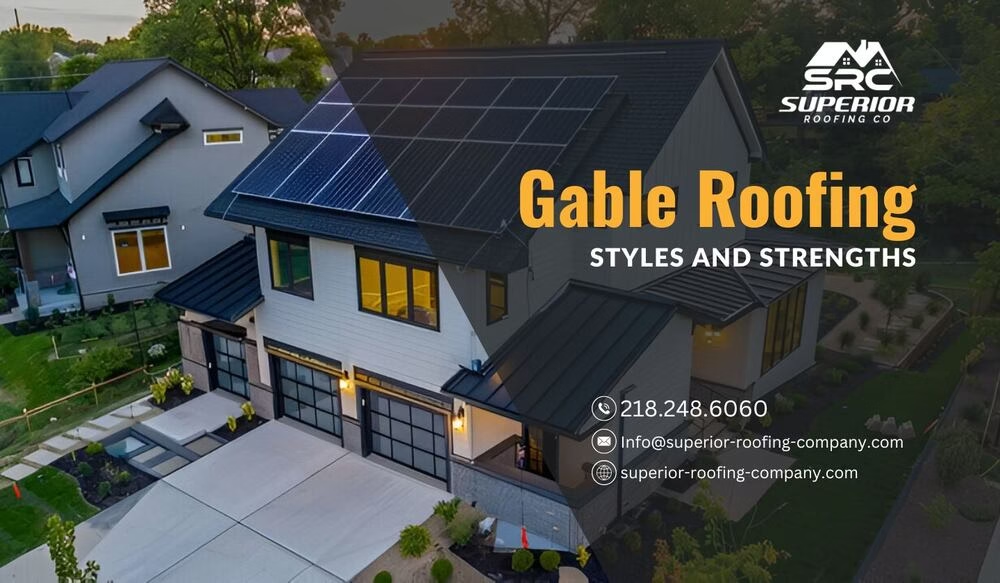If you own a property in Duluth, Minnesota, you already know the stakes when it comes to roofing. Snowstorms, high winds, and temperature swings aren’t just seasonal – they are structural tests. That’s why gable roofs are a go-to for many local homeowners and building managers.
But what exactly makes a gable roof so reliable? And with all the variations – dormers, Dutch gables, and jerkinheads – how do you pick the right one?
Let’s break this down clearly so you can make a smart choice for your home or commercial building.
What Is a Gable in Roofing?
A gable is the triangular section formed where two pitched roof surfaces meet. Picture that clean “A” shape you often see on classic homes. It’s more than just a visual – this shape plays a functional role by helping snow and water slide right off the roof.
In snowy cities like Duluth, that’s not just helpful – it’s necessary.
Why Is It Called a Gable?
The term “gable” comes from old European languages and refers to the triangular end of a building. The word stuck because the structure became a standard across centuries of building styles – from Norwegian cabins to New England farmhouses.
In Duluth, that same design has become a staple due to how well it handles snowfall and allows for ventilation.
Also read: How to Build a Shed Roof Yourself
What Are the Benefits of a Gable Roof?
Gable roofs are not just a popular design – they are considered a smart build choice. And here’s why:
- Fast drainage: Rain and snow does not linger on gable roofs.
- Extra attic space: That triangular shape creates an extra room above.
- Simple design, fewer materials: Cuts down on build time and costs.
- Air circulation: Easy to install vents or windows on the gable walls.
Although it isn’t the most elegant choice, a gable roof doesn’t have to be. Function is more important in Duluth’s climate than flash, and this design succeeds.
Also read: The Best Roofing Material for Northern Minnesota
What Is the Function of a Gable?
A gable’s job is clear:
- Direct snow and water away from the roof.
- Provide space for ventilation or attic storage.
- Improve roof slope for weather resistance.
- Add architectural character without complexity.
The design might look straightforward, but when installed by a skilled crew, it becomes one of the hardest-working parts of your home.
Also read: How Long Does a Thatched Roof Last?
How Strong Is a Gable Roof?
That depends on the build. Gable roofs perform well under snow load – a critical factor in roof installation for Duluth, MN homes. Their slope naturally prevents snow buildup, reducing pressure on the structure.
Wind, however, is where corners cannot be cut. Gable roofs need solid framing, secure bracing, and strategic vent placement to resist lateral force. Without those details, the gables can become vulnerable in a storm.
The good news? A seasoned roofing contractor in Duluth MN, can build in reinforcements that keep your home safe year-round.
Gable Roof Types You Should Know

Not all gable roofs are created equal. Some are built for space, others for wind deflection or snow shedding. Here’s a breakdown of the styles you might see around town – or on your own building:
- Open Gable: Exposed triangle ends. Simple, clean, and common.
- Box Gable: Closed ends offer slightly better insulation.
- Dormer Gable: Adds daylight and ventilation to attics.
- M-Shaped: Two gables back-to-back. Great for multi-unit homes.
- Hip: Sloped on all four sides. Less gable, more wind resistance.
- Jerkinhead: Clipped gables reduce wind impact.
- Dutch Gable: A gable on top of a hip roof. Stylish and strong.
- Combination Roof: Mixes styles for complex buildings.
- Cross Hipped: Two hip roofs that intersect.
- Hip and Valley: Suited for large homes with varying wings.
- Hexagonal: More decorative than functional. Used in gazebos.
- Gambrel: Think barn-style with steep lower slopes. More attic room.
- Mansard: French-inspired double slopes. Adds a full story of space.
- Saltbox: One long slope, one short. Snow just slides off.
- Pyramid Hip: All sides meet at a point. Good for square buildings.
- Skillion / Lean-To: One sloped plane. Simple and modern.
- Flat Roof: Rarely used in Duluth homes due to snow.
- Shed Roof: Great for additions or garages.
- Butterfly Roof: Inverted slope. Looks modern, but poor for snow.
For Duluth homes with steep driveways or lakeside exposure, saltbox and jerkinhead styles offer excellent snow handling and wind resistance.
Also read: What are the Flat Roof Advantages?
Which Gable Style Is Right for You?

Making the right choice depends on more than just curb appeal. Consider the following:
| Factor | Recommended Roof Type |
| Heavy snow loads | Open Gable, Saltbox |
| Wind-prone area | Jerkinhead, Dutch Gable |
| Need extra space | Gambrel, Mansard |
| Want a modern look | Butterfly, Skillion |
| Limited budget | Box Gable, Open Gable |
Still unsure? You need the opinion of a roofing expert who understands local climate, codes, and construction best practices.
Also read: How to Install a Metal Roof?
Need Help Choosing a Roof That Works for Duluth Weather?
Gable roofs are not just a design choice – they are a defense against harsh winters, wind tunnels, and ice damming.
At Superior Roofing Company, we have worked on hundreds of gable roof installations across Duluth. Our roofers understand the local snow loads, wind ratings, and how to frame roofs that do not just look good but last longer than ever.
We do not push upgrades. We walk you through smart options based on your home’s age, size, and location.
Call Superior Roofing Company today at (218) 248-6060 for free estimates and roof inspections. Serving Duluth. Built for Duluth.

